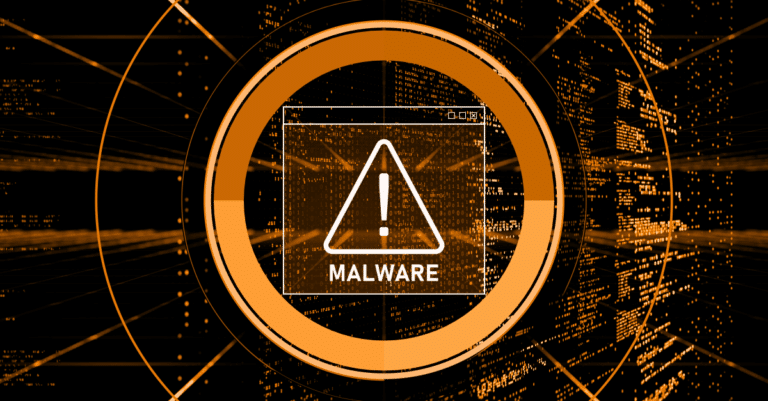IT Incident Response Plan in 5 Easy Steps
No business is immune to disruption. While many think of cyberattacks first, an IT incident can stem from far more than malware. Lost devices, employee errors, power failures and natural disasters are just as likely to impact your business continuity.
That’s why every small business needs an actionable, human-friendly incident response plan. Not just for cybersecurity threats, but for any unexpected event that affects your systems, data or operations.
At TechKnowledgey, we help Indiana businesses build and maintain plans that are realistic, repeatable, and ready when you need them most. Our approach follows the NIST framework, structured around five core phases:
Identify. Protect. Detect. Respond. Recover.
Let’s walk through how your organization can implement this framework in a way that supports your incident response team, empowers your staff and aligns with real-world business needs.
Step 1: Identify the Incident
The first step in any incident response process is knowing what you’re dealing with. It’s not always immediately obvious whether something is a technical issue, a cyber incident or a physical disruption.
Start by clarifying the incident type. Is this a case of unauthorized access, system failure, phishing, hardware theft or weather-related downtime? Is this isolated to one user or affecting your entire network?
Understanding the scope early allows your incident response team to decide which procedures to follow and whether to escalate the issue. This is also when you assess potential legal, operational, or financial impact – and determine if sensitive data, such as customer records or financial information, has been exposed.
TL;DR: Identify what happened, who’s affected and how it impacts your business.
Step 2: Protect Critical Systems and Contain the Damage
Once the issue is confirmed, shift into protection mode. This means stopping the incident from spreading further – whether that involves isolating a device, shutting off access or communicating with your team to prevent further disruptions.
Good protection starts well before an incident ever occurs. Having strong roles and responsibilities defined (who leads, who communicates, who acts) can make a major difference in response time.
Your communication plan should ensure that affected team members, departments, and stakeholders know what’s happening and what steps to take. It’s not just about technical tools, it’s also about clear leadership and direction when things go sideways.
And if you’re working with a provider like TechKnowledgey, we’ll make sure that tools like EDR, firewalls and access controls are in place to support your incident management goals.
Step 3: Detect and Monitor
Effective detection helps you catch problems early, sometimes before they cause damage. In many cases, your team might notice signs of a breach before your systems do. Unusual email behavior, locked-out accounts, or slowed performance can all be early signals.
At TechKnowledgey, we help clients monitor for threats using tools like SentinelOne EDR, Adlumen SIEM and 24/7 SOC services. But tools alone aren’t enough.
Encourage your employees to report suspicious activity promptly. Your incident response plan should include guidelines on how to escalate concerns: who to contact, how to document them, and how fast to act.
A strong incident handling policy blends people, process and technology to spot issues before they become disasters.
Step 4: Respond Strategically and Preserve Evidence
Once an incident is confirmed, act fast but carefully.
Start by executing your containment procedures:
- Disconnect affected devices
- Disable compromised accounts
- Block access
- Prevent further loss.
But don’t immediately restore systems or wipe data. If this incident involves stolen data, extortion or system compromise, you’ll likely need to involve your cyber insurance provider or even law enforcement.
In these situations, it’s essential to preserve logs and evidence. Many businesses unintentionally destroy crucial data by restoring systems too quickly – jeopardizing insurance claims and investigations.
Your incident response plan should clearly state when and how to notify your insurance carrier, legal advisors, and public relations team. At TechKnowledgey, we guide clients through this process using structured runbooks and compliance checklists.
Step 5: Recover and Resume Operations
Once containment is complete and you’re cleared to proceed, begin restoring systems from clean backups. Validate the integrity of your data, confirm that the threat is gone and gradually bring your infrastructure back online.
This is where solid disaster recovery strategies pay off. Whether it’s a natural disaster, human error or ransomware attack, your ability to recover depends on reliable backups, documentation and internal coordination.
A successful recovery includes not just systems, but people. Update your internal teams, support affected users and make sure everyone understands what’s changed before returning to business as usual.
After-Action Review: What Happened and How Do We Improve
Every incident offers a chance to improve. That’s why your response plan should end with a structured post-incident review.
This lessons learned session should cover:
- What caused the incident
- How well your incident response team performed
- Whether your tools, policies, or training were effective
- What needs to be changed in your incident response plan or communication plan
Also consider: Should you have contacted law enforcement sooner? Were you ready for an insurance claim? Were your backups recent and reliable?
Reviewing and documenting these answers helps you build a stronger, faster and more confident response next time.
Indiana Businesses Trust TechKnowledgey
TechKnowledgey works with privately owned businesses across Indiana to build IT resilience. Our clients rely on us not just for technical support, but for long-term planning, compliance readiness and peace of mind.Whether you’re managing a single site or multiple locations, our team is here to ensure your business is protected. Don’t wait for a data breach to build a plan – schedule a consultation with TechKnowledgey today.






